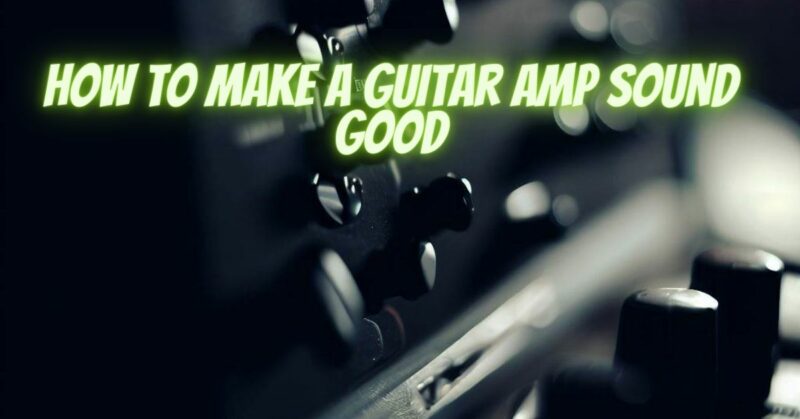For guitarists, achieving the perfect tone is an ongoing quest that involves a blend of artistry, technique, and equipment finesse. While the guitar itself plays a crucial role, the amplifier serves as the sonic canvas upon which the guitarist paints their musical expression. This comprehensive guide explores various techniques and considerations to help you unlock the full potential of your guitar amp and create a sound that resonates with your unique style.
- Understanding Your Gear:
Before diving into tone-shaping, it’s essential to have a deep understanding of your guitar and amp. Each guitar and amplifier combination has its own sonic characteristics. Experiment with different settings, pickup configurations, and amp channels to identify the tonal palette available to you.
- Taming the EQ:
The equalization (EQ) controls on your amp are powerful tools for shaping your sound. Start with a flat EQ setting and make subtle adjustments. Boosting the bass can add warmth, while increasing the treble can enhance clarity. Be mindful of the midrange, as it often defines the character and presence of your guitar in the mix.
- Mastering the Gain:
The gain or overdrive control is where the magic happens for many guitarists. Experiment with different levels of gain to find the sweet spot for your playing style. Too much gain can muddy the sound, while too little may lack character. Strive for a balance that suits the genre and mood you’re aiming for.
- Choosing the Right Pedals:
Pedals are invaluable tools for sculpting your tone. Experiment with distortion, overdrive, modulation, and delay pedals to discover the sonic landscapes they can create. Consider the order in which you place them in your signal chain, as it can significantly impact the overall sound.
- Optimizing Speaker and Cabinet Selection:
If your amp allows for speaker and cabinet customization, explore different options to find the combination that complements your playing style. Speakers can have a profound impact on the overall tonal character, from vintage warmth to modern clarity.
- Room Acoustics and Mic Placement:
Pay attention to the acoustics of the room in which you’re playing. Hard surfaces can cause reflections and affect the perceived tone. When miking your amp, experiment with mic placement to capture the nuances of your sound accurately. The distance and angle of the mic can drastically alter the recorded tone.
- Utilizing Amp Effects:
Many modern amplifiers come with built-in effects like reverb, chorus, and tremolo. Experiment with these effects to enhance your sound. However, be cautious not to overdo it; subtlety often produces the most pleasing results.
- Regular Maintenance:
Keep your amp in top condition by performing regular maintenance. Clean the input jacks, check for loose connections, and replace worn-out tubes. A well-maintained amp ensures consistent and reliable performance.
Crafting a stellar guitar tone is a dynamic process that involves experimentation, patience, and a keen ear. Your amp is not merely a tool; it’s an extension of your musical identity. By understanding your gear, fine-tuning the EQ, exploring pedals, and optimizing various components, you can unlock the full sonic potential of your guitar amp. Remember, the journey to a great tone is as rewarding as the destination, so enjoy the process of discovering the sounds that resonate with your musical soul.


